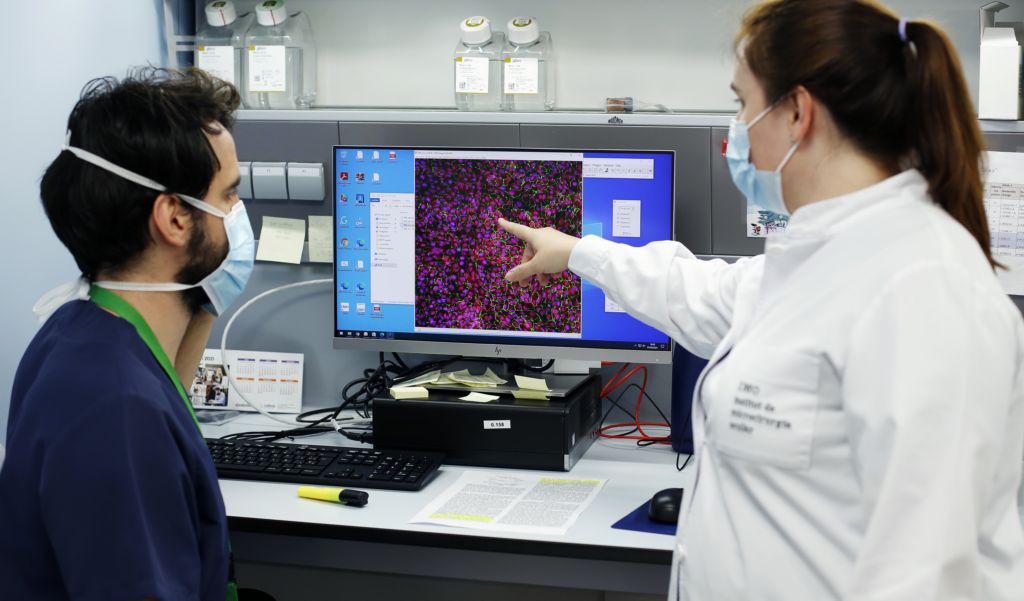
Groundbreaking cellular models for the future treatment of retinitis pigmentosa
Promoted by the IMO Foundation, the project includes cutting-edge work with organoids (3D cell cultures), the first step towards generating retinas in vitro
Our research team has designed, in the molecular biology laboratory located at the Barcelona headquarters of IMO Grupo Miranza, several groundbreaking cell models to study in vitro mutations in seven genes associated with retinal dystrophies, including three that cause retinitis pigmentosa, which may help in their treatment.
Within the framework of this project of Miranza’s R&D&I Department, promoted through the IMO Foundation, the two types of retinal cells affected by these inherited diseases have been obtained: the pigment epithelial cells and the photoreceptor cells.
Furthermore, Miranza researchers have gone a step further and, as forerunners of state-of-the-art international procedures, have begun to work with retinal organoids (3D cell cultures). These immature cell aggregates at a first stage soon begin to follow the protocols to achieve mature organoids, whose structure and function resemble that of a real retina, in order to study the cells affected by retinal dystrophies in context. This will provide valuable information for developing treatments for retinitis pigmentosa, among other dystrophies, in the coming years.
Moving towards the treatment of retinitis pigmentosa
“We know that retinitis pigmentosa and other retinal dystrophies damage the outermost layers of this eye tissue (the pigment epithelium and/or photoreceptors), but we still do not know some of the mechanisms that do so. Creating these cell models allows us to study the specific effect of each mutation, which can inhibit the expression of the gene or alter its function in different ways”, explains Dr Esther Pomares, a coordinator of our group’s basic research projects.
The geneticist adds that “based on a better understanding of the disease, we can advance towards future treatments for both retinitis pigmentosa and different retinal dystrophies, which are still incurable. On the one hand, gene therapies provide a new gene or deactivate the defective gene and, on the other, cell therapies implant healthy cells in the damaged retina.”
International impact of our lab’s milestones
This is the ultimate purpose of a project that was started in 2017 with the aim of obtaining cellular models for the study of retinal dystrophies. The pigment epithelial cells and photoreceptor cells that have been achieved at our IMO Grupo Miranza lab, as well as the organoids, come from the differentiation of iPSC stem cells (adult cells that are “reprogrammed” to a state similar to embryonic stem cells).
These iPSC stem cell models were, in turn, obtained from skin cells of patients with retinal dystrophies, a milestone which was published in international scientific journals in 2020 and of interest to the US National Eye Institute NIH.
Thanks to a collaboration agreement between this institution and the IMO Foundation, we provided some of the models, sharing the findings with the scientific community in order to make progress in the treatment of these orphan eye diseases, such as retinitis pigmentosa, which are genetic in origin and responsible for severe vision loss. In doing so, we continue to make progress towards bringing the future treatment of retinitis pigmentosa and other retinal dystrophies closer.